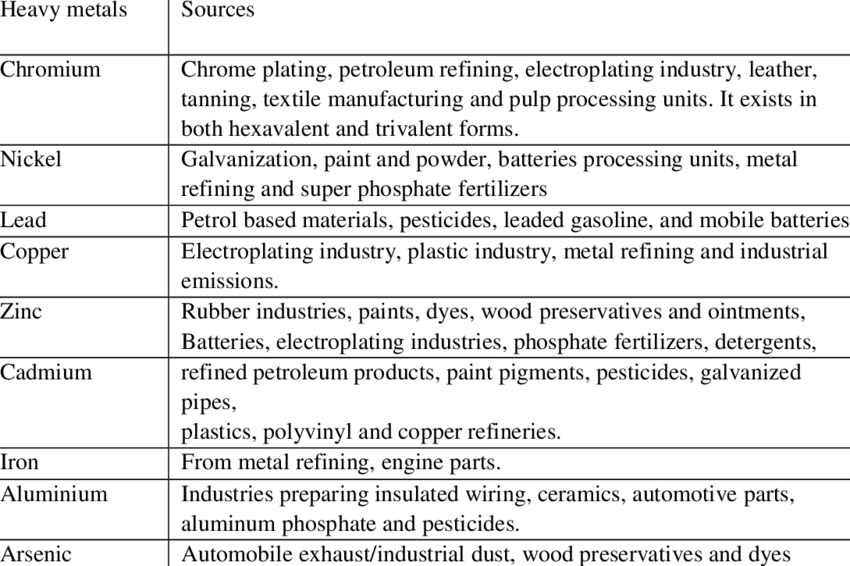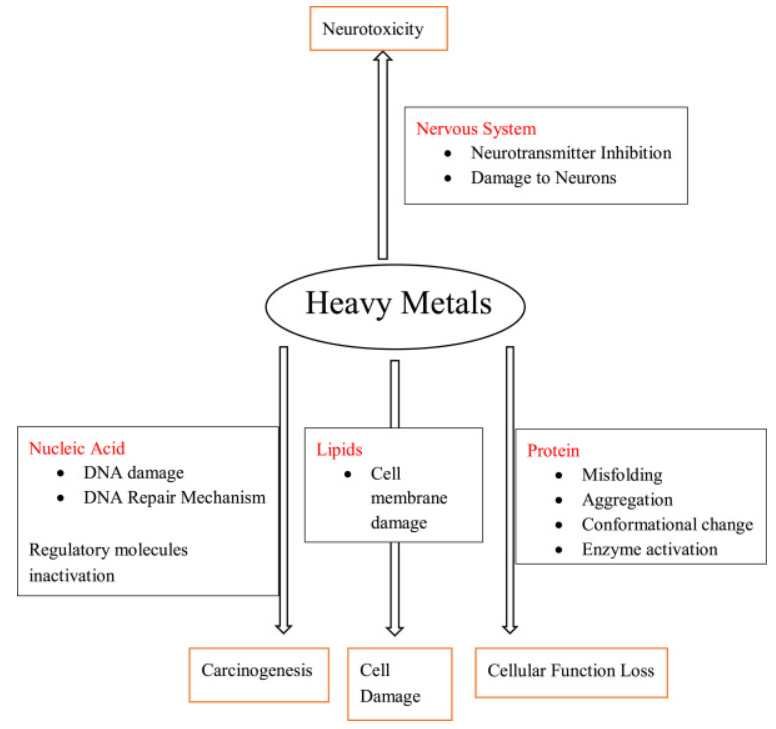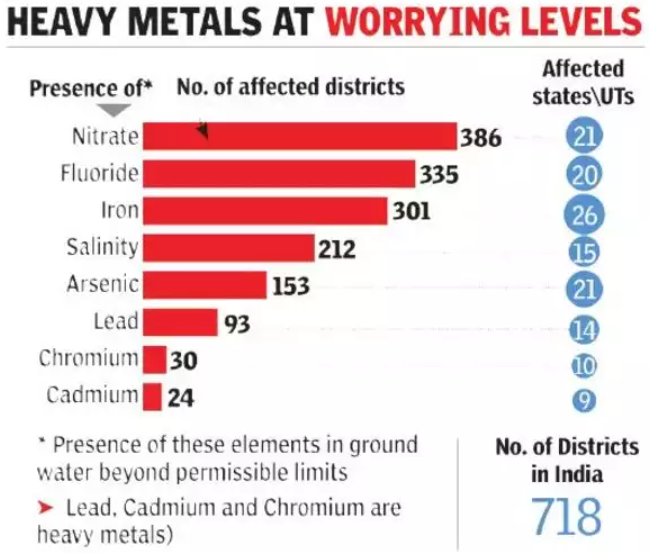Heavy Metal pollution
2022 JUN 13
Mains >
Environment & Ecology > Pollution > Soil pollution
IN NEWS:
- Three out of every four river monitoring stations in India posted alarming levels of heavy toxic metals, according to the environmental NGO Centre for Science and Environment (CSE).
|
MORE ON THE NEWS:
- India has 764 river quality monitoring stations across 28 states. In about a fourth of the monitoring stations, which are spread across 117 rivers and tributaries, high levels of two or more toxic metals were reported.
- Of the 33 monitoring stations in Ganga, 10 had high levels of contaminants. The river has high levels of lead, iron, nickel, cadmium and arsenic.
- Of the 588 water quality stations monitored for pollution, total coliform and biochemical oxygen demand were high in 239 and 88 stations across 21 States - an indicator of poor wastewater treatment.
- India dumps 72% of its sewage waste without treatment. Ten States do not treat their sewage at all, as per the Central Pollution Control Board.
|
HEAVY METAL:
- The term heavy metal refers to any metallic chemical element that has a relatively high density, atomic weights, or atomic numbers compared to water.
- Examples of heavy metals include mercury (Hg), cadmium (Cd), arsenic (As), chromium (Cr), thallium (Tl), lead (Pb), nickel (Ni), and copper (Cu).
- As trace elements, some heavy metals (Eg: copper, selenium, zinc) are essential to maintain the metabolism of the human body. They are important constituents of several key enzymes. But at higher concentrations, they are toxic.
SOURCES:
- Natural sources:
- Heavy metals are natural components of the Earth's crust. They are released through geological weathering and mass movement.
- Other natural sources include volcanic activity, metal corrosion and soil erosion.
- Anthropogenic sources:

-
- Mining, foundries and smelters, and other metal-based industrial operations.
- Discharge of wastewater from industries without treatment. Eg: Tannery industry is a major source of chromium while paint industries contribute to high levels of lead.
- Leaching of metals from different sources such as landfills, waste dumps, excretion, livestock manure, runoffs and roadworks.
- Vehicular emission, especially from the use of leaded petrol.
- Heavy metal use in agricultural field, such as the use of pesticides, insecticides and fertilisers.
- Application of biocides such as vector controls. Eg: Commercial mosquito repellent coil has high concentration of heavy metals such as Arsenic, Copper, Zinc, and Chromium.
- Overexploitation of groundwater: Excess extraction of groundwater results in increased leaching of metal ions from the aquifer rocks.
CONSEQUENCES:
- Impact on health:
- When the heavy metals are swallowed or inhaled, they bioaccumulate in our system. This bioaccumulation causes biological and physiological complications.
- Eg: Exposure to cadmium leads to Itai-itai disease, which is characterised by osteomalaecia with severe bone pain and is associated with renal tubular dysfunction.

- Soil pollution:
- Since heavy metals are non-degradable, they stay in the soil for a very long time. Heavy metals also affect the biodegradability of organic pollutants, making them less degradable and thus causing double the effect of polluting the environment.
- Water pollution:
- These persistent pollutants end up in water bodies from surface run offs and discharge of untreated water. This can then enter the food chain and cause severe health impacts.
- Eg: Nitrate in drinking water can cause methaemoglobinaemia or the decreased ability of blood to carry vital oxygen around the body.
- Heavy metal pollution can increase antibiotic resistance in rivers.

- Air pollution
- Heavy metals can be found as particles, droplets, or in the gaseous form. They can lead to serious health problems such as skin and eyes irritation, respiratory infections, premature mortality and cardiovascular diseases.
- These pollutants also cause deterioration of infrastructure, corrosion, formation of acid rain, eutrophication and haze.
REMEDIES:
- Chemical methods:
- Chemical precipitation, electrochemical treatment, oxidation/reduction.
- Physical methods:
- Ion exchange, membrane technology, reverse osmosis, and evaporation recovery, filtration.
- However, these strategies are expensive, labor intensive and can be used for on a select heavy metals.
- Biosorption:
- It refers to the removal of pollutants from water systems using biological materials, especially microorganisms.
- Phytoremediation:
- Phytoremediation is a subcategory of bioremediation which uses “hyperaccumulator” plants to absorb the toxic materials in the soil and accumulate in their living tissue. The hyperaccumulators have the ability to absorb hundreds or thousands of times greater amounts of these substances compared to other plants.
WAY FORWARD:
- Proper monitoring and surveillance:
- A multi-disciplinary approach is necessary for critical sample collection, assured quality analysis, interpretation of laboratory and epidemiological data and surveillance.
- Monitoring and surveillance should be maintained, especially in the "hot spots" of metal contamination.
- There is also an urgent need to establish standards of heavy metal levels in air, soil, water and living beings.
- Limit usage:
- Substitute minerals with natural products, composites and non-toxic metals.
- Restrict popular practices like metal coating and colouration of food and food additives strictly certified.
- Supply clean water:
- As water is a key source of heavy metal injection into humans, supply of clean water to all must be made a priority. For this, the Jal Jeevan Mission (JJM) must be implemented in all parts of the country.
- Strict pollution control measures:
- No industrial effluents or sewage should be allowed to be discharged into natural bodies without prior treatment.
- Ecological tax reforms should also be introduced and industries responsible for the heavy metal load in the environment should be fined.
- International efforts:
PRACTICE QUESTION:
Q. Heavy metal pollution is an increasing concern in India. Discuss the causes of heavy metal pollution and suggest measures to address the issue?


